-
 Bitcoin
Bitcoin $117500
2.15% -
 Ethereum
Ethereum $3911
6.19% -
 XRP
XRP $3.316
10.79% -
 Tether USDt
Tether USDt $1.000
0.01% -
 BNB
BNB $787.2
2.24% -
 Solana
Solana $175.2
4.15% -
 USDC
USDC $0.9999
0.00% -
 Dogecoin
Dogecoin $0.2225
8.40% -
 TRON
TRON $0.3383
0.28% -
 Cardano
Cardano $0.7868
6.02% -
 Stellar
Stellar $0.4382
9.34% -
 Hyperliquid
Hyperliquid $40.92
7.56% -
 Sui
Sui $3.764
7.63% -
 Chainlink
Chainlink $18.48
10.66% -
 Bitcoin Cash
Bitcoin Cash $582.1
1.88% -
 Hedera
Hedera $0.2601
6.30% -
 Avalanche
Avalanche $23.33
4.94% -
 Ethena USDe
Ethena USDe $1.001
0.02% -
 Litecoin
Litecoin $122.3
2.04% -
 UNUS SED LEO
UNUS SED LEO $8.969
-0.27% -
 Toncoin
Toncoin $3.339
0.86% -
 Shiba Inu
Shiba Inu $0.00001287
4.30% -
 Uniswap
Uniswap $10.43
7.38% -
 Polkadot
Polkadot $3.861
5.08% -
 Dai
Dai $1.000
0.02% -
 Bitget Token
Bitget Token $4.513
3.41% -
 Monero
Monero $267.7
-6.18% -
 Cronos
Cronos $0.1499
4.14% -
 Pepe
Pepe $0.00001110
5.15% -
 Aave
Aave $284.9
8.28%
How to choose the trading pair of LBank contracts? What are the risk differences between mainstream currencies and small currencies?
Choosing the right trading pair on LBank is crucial for maximizing profits and minimizing risks, considering factors like liquidity, volatility, and market trends.
May 04, 2025 at 02:43 pm

When it comes to trading on LBank, choosing the right trading pair for contracts is crucial for maximizing potential profits and minimizing risks. LBank offers a variety of trading pairs, and understanding how to select the most suitable one based on your trading strategy and risk tolerance is essential. Additionally, it's important to understand the risk differences between mainstream currencies and smaller, less-established cryptocurrencies. This article will guide you through the process of selecting a trading pair on LBank and highlight the risk differences between mainstream and small currencies.
Understanding LBank Trading Pairs
LBank offers a wide range of trading pairs for its contract trading platform. A trading pair consists of two cryptocurrencies, where one is traded against the other. For example, BTC/USDT means you are trading Bitcoin (BTC) against Tether (USDT). When choosing a trading pair, consider the following factors:
- Liquidity: High liquidity means there are more buyers and sellers, which can lead to smoother and faster trades. Pairs like BTC/USDT or ETH/USDT typically have high liquidity.
- Volatility: Some pairs are more volatile than others, which can offer higher potential returns but also come with higher risk.
- Market Trends: Keep an eye on market trends and news that might affect the value of the cryptocurrencies in the pair.
- Trading Goals: Your short-term and long-term trading goals should influence your choice of trading pair.
Steps to Choose a Trading Pair on LBank
To select a trading pair on LBank, follow these steps:
- Log into your LBank account: Ensure you are logged into your account to access the trading platform.
- Navigate to the Contract Trading Section: Once logged in, go to the "Contract Trading" section of the platform.
- Browse Available Pairs: You will see a list of available trading pairs. Take your time to review the options.
- Select a Pair: Based on your analysis of liquidity, volatility, and market trends, click on the trading pair you wish to trade.
- Analyze the Pair: Use the charting tools provided by LBank to analyze the historical performance and current market conditions of the selected pair.
- Place Your Order: Once you are satisfied with your choice, you can proceed to place your trading order.
Risk Differences Between Mainstream and Small Currencies
When trading on LBank, it's important to understand the risk differences between mainstream currencies and small currencies. Here's a detailed look at these differences:
Mainstream Currencies
Mainstream currencies such as Bitcoin (BTC), Ethereum (ETH), and Tether (USDT) are widely recognized and traded. The risks associated with trading these currencies include:
- Market Volatility: While mainstream currencies can be volatile, their price movements are generally more predictable due to higher market liquidity and broader market participation.
- Regulatory Risks: These currencies are more likely to be subject to regulatory scrutiny, which can impact their value.
- Liquidity Risks: Mainstream currencies have high liquidity, which reduces the risk of slippage and makes it easier to enter and exit positions.
Small Currencies
Small currencies, also known as altcoins or lesser-known cryptocurrencies, come with different risk profiles:
- Higher Volatility: Small currencies often experience more extreme price fluctuations, which can lead to higher potential returns but also greater losses.
- Liquidity Risks: These currencies may have lower liquidity, which can make it difficult to buy or sell large amounts without affecting the market price.
- Information Asymmetry: There is often less information available about small currencies, making it harder to make informed trading decisions.
- Pump and Dump Schemes: Small currencies are more susceptible to manipulation through pump and dump schemes, where the price is artificially inflated and then sold off by early investors.
Balancing Risk and Reward
When choosing between mainstream and small currencies on LBank, consider your risk tolerance and investment goals. Mainstream currencies offer a more stable trading environment with lower risk, but potentially lower returns. Small currencies can offer higher returns but come with increased risk due to their volatility and lower liquidity.
To balance risk and reward, you might consider diversifying your portfolio across different types of currencies. This strategy can help mitigate the risks associated with trading small currencies while still allowing you to capitalize on their potential for high returns.
Practical Tips for Trading on LBank
Here are some practical tips to enhance your trading experience on LBank:
- Use Stop-Loss Orders: Set stop-loss orders to limit potential losses on your trades.
- Stay Informed: Keep up-to-date with market news and trends that might affect your chosen trading pairs.
- Utilize Technical Analysis: Use the charting tools on LBank to perform technical analysis and make informed trading decisions.
- Monitor Your Trades: Regularly monitor your open positions and adjust your strategy as needed based on market conditions.
Frequently Asked Questions
Q1: Can I trade futures contracts on LBank?
Yes, LBank offers futures contracts trading. You can access these contracts in the "Contract Trading" section of the platform. Ensure you understand the risks associated with futures trading before you begin.
Q2: How can I improve my trading skills on LBank?
To improve your trading skills on LBank, consider the following strategies:
- Educate Yourself: Take advantage of educational resources and tutorials offered by LBank and other reputable sources.
- Practice with a Demo Account: If available, use a demo account to practice trading without risking real money.
- Analyze Your Trades: Keep a trading journal to review your past trades and learn from your successes and failures.
- Stay Disciplined: Develop a trading plan and stick to it to avoid emotional decision-making.
Q3: What are the fees associated with trading contracts on LBank?
LBank charges various fees for trading contracts, including trading fees, withdrawal fees, and possibly other transaction-related fees. These fees can vary based on your trading volume and the specific trading pair. It's important to review the fee structure on LBank's website before you start trading.
Q4: How can I manage my risk when trading on LBank?
To manage risk when trading on LBank, consider the following strategies:
- Diversify Your Portfolio: Spread your investments across different trading pairs to reduce the impact of any single trade.
- Use Risk Management Tools: Utilize stop-loss orders and take-profit orders to limit potential losses and lock in gains.
- Set a Risk-Reward Ratio: Establish a risk-reward ratio for each trade to ensure that potential gains justify the risks.
- Avoid Overleveraging: Be cautious with leverage, as it can amplify both gains and losses.
Disclaimer:info@kdj.com
The information provided is not trading advice. kdj.com does not assume any responsibility for any investments made based on the information provided in this article. Cryptocurrencies are highly volatile and it is highly recommended that you invest with caution after thorough research!
If you believe that the content used on this website infringes your copyright, please contact us immediately (info@kdj.com) and we will delete it promptly.
- Tron's Sell-Off Spurs Altcoin Shift: What's Next for TRX?
- 2025-08-08 08:30:12
- Sleep Token's US Takeover: Thornhill Rides the 'Even In Arcadia' Wave
- 2025-08-08 08:30:12
- FTT Token's Wild Ride: Creditor Repayments vs. Market Drop - A New Yorker's Take
- 2025-08-08 07:10:12
- Floki Crypto Price Prediction: Riding the Robinhood Rocket or Just a Meme?
- 2025-08-08 07:15:12
- EigenLayer, Restaking, and Ethereum: Navigating the Hype and the Hazards
- 2025-08-08 06:30:12
- Super Bowl 59: Jon Batiste to Jazz Up the National Anthem
- 2025-08-08 06:30:12
Related knowledge

What are the specific maker and taker fees on KuCoin Futures?
Aug 08,2025 at 08:28am
Understanding Maker and Taker Fees on KuCoin FuturesWhen trading on KuCoin Futures, users encounter two primary types of fees: maker fees and taker fe...
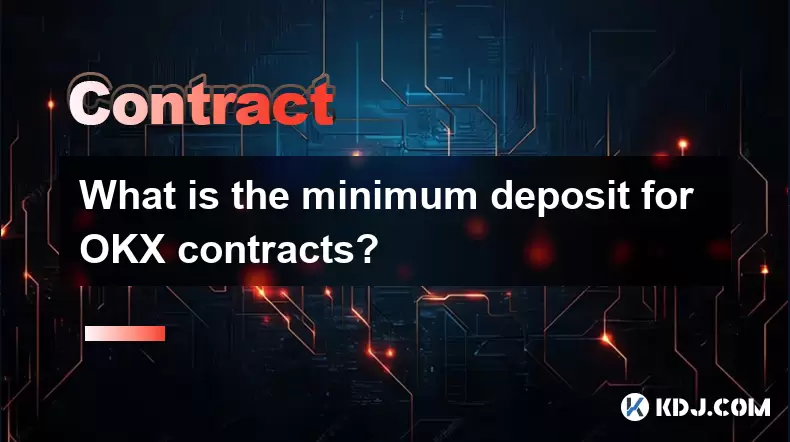
What is the minimum deposit for OKX contracts?
Aug 08,2025 at 07:00am
Understanding OKX Contract Trading BasicsOKX is one of the leading cryptocurrency derivatives exchanges, offering a wide range of perpetual and future...
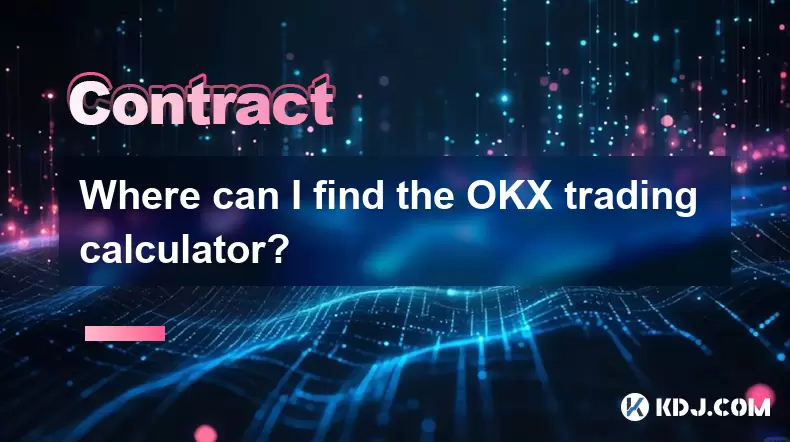
Where can I find the OKX trading calculator?
Aug 08,2025 at 07:49am
Understanding the OKX Trading Calculator FunctionalityThe OKX trading calculator is a powerful analytical tool designed to assist traders in estimatin...
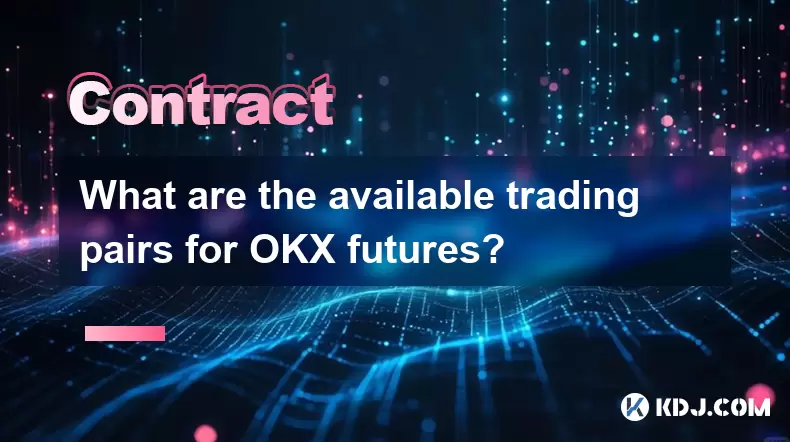
What are the available trading pairs for OKX futures?
Aug 08,2025 at 08:49am
Understanding OKX Futures Trading PairsOKX is one of the leading cryptocurrency derivatives exchanges, offering a wide range of futures trading pairs ...
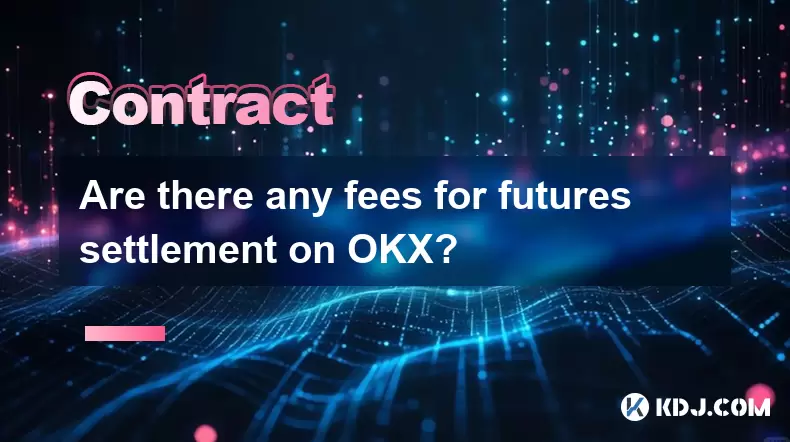
Are there any fees for futures settlement on OKX?
Aug 08,2025 at 05:35am
Understanding Futures Settlement on OKXFutures settlement on OKX refers to the process by which open futures contracts are automatically closed or mar...
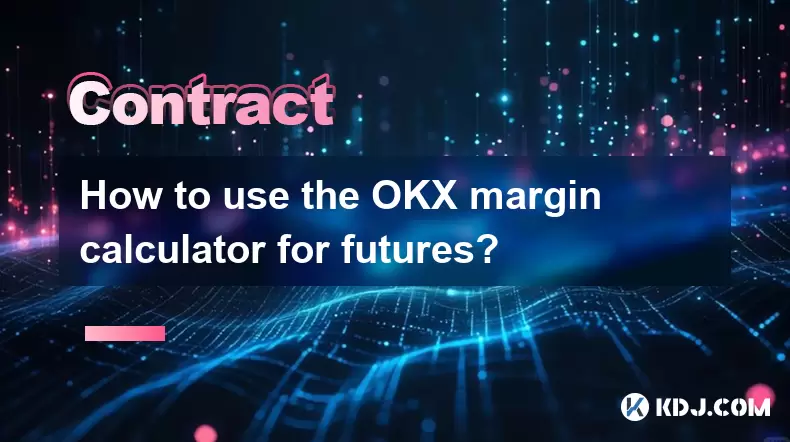
How to use the OKX margin calculator for futures?
Aug 08,2025 at 05:15am
Understanding the OKX Margin Calculator for FuturesThe OKX margin calculator is a specialized tool designed to assist traders in estimating the requir...

What are the specific maker and taker fees on KuCoin Futures?
Aug 08,2025 at 08:28am
Understanding Maker and Taker Fees on KuCoin FuturesWhen trading on KuCoin Futures, users encounter two primary types of fees: maker fees and taker fe...

What is the minimum deposit for OKX contracts?
Aug 08,2025 at 07:00am
Understanding OKX Contract Trading BasicsOKX is one of the leading cryptocurrency derivatives exchanges, offering a wide range of perpetual and future...

Where can I find the OKX trading calculator?
Aug 08,2025 at 07:49am
Understanding the OKX Trading Calculator FunctionalityThe OKX trading calculator is a powerful analytical tool designed to assist traders in estimatin...

What are the available trading pairs for OKX futures?
Aug 08,2025 at 08:49am
Understanding OKX Futures Trading PairsOKX is one of the leading cryptocurrency derivatives exchanges, offering a wide range of futures trading pairs ...

Are there any fees for futures settlement on OKX?
Aug 08,2025 at 05:35am
Understanding Futures Settlement on OKXFutures settlement on OKX refers to the process by which open futures contracts are automatically closed or mar...

How to use the OKX margin calculator for futures?
Aug 08,2025 at 05:15am
Understanding the OKX Margin Calculator for FuturesThe OKX margin calculator is a specialized tool designed to assist traders in estimating the requir...
See all articles

























































































